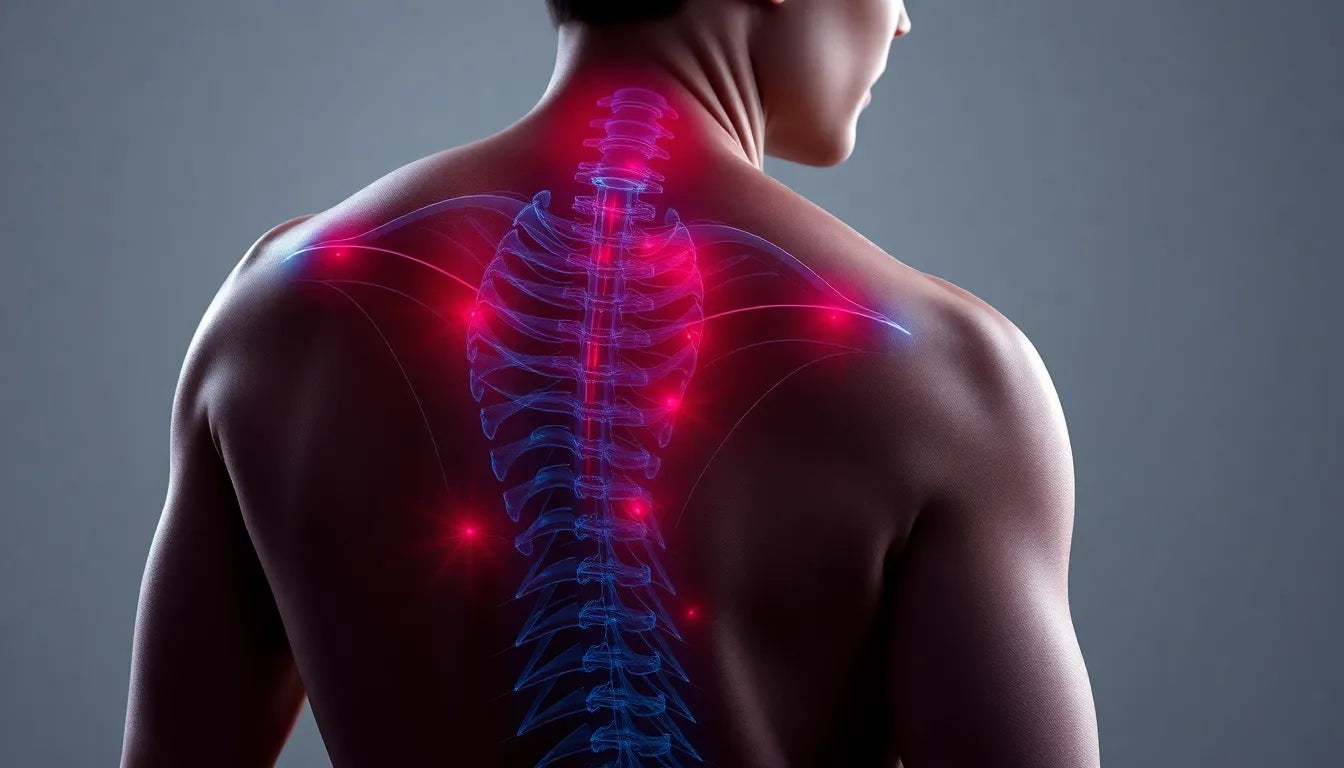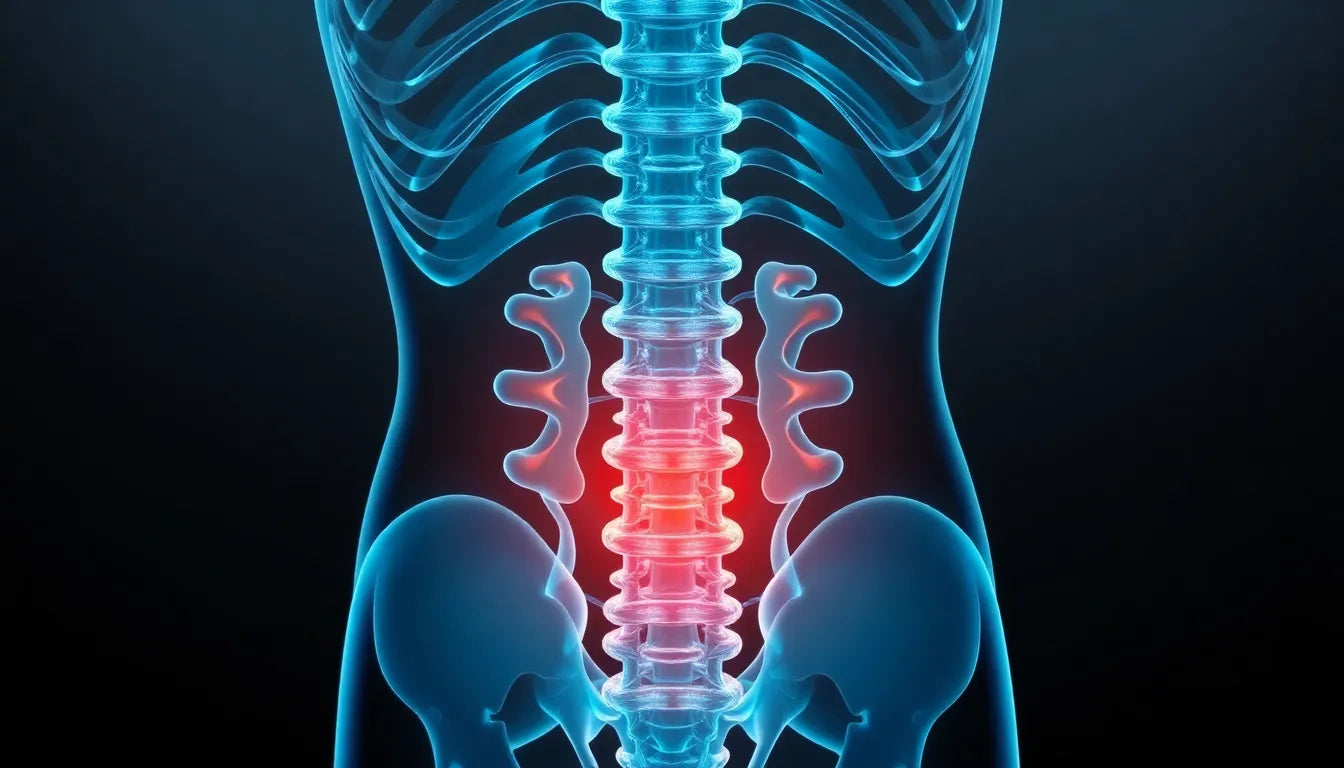Living with a herniated disc in the lower back can feel like an uphill battle, affecting every aspect of daily life. The persistent pain and restricted mobility can make even the simplest tasks seem daunting. Yet, understanding the condition and the path to recovery can empower sufferers to reclaim their lives with confidence.
understanding a herniated disc in the lower back
A herniated disc, often referred to as a slipped or ruptured disc, occurs when the soft inner gel of a spinal disc pushes through a tear in the tougher exterior casing. This can happen anywhere along the spine, but it is particularly common in the lower back, or lumbar region. The lumbar spine bears much of the body's weight and endures significant stress and strain, making it susceptible to injury. Factors such as age-related degeneration, improper lifting techniques, and even genetic predisposition can contribute to the occurrence of a herniated disc.
the role of rehabilitation in recovery
Rehabilitation plays a crucial role in managing the symptoms of a herniated disc and facilitating recovery. While the pain and discomfort can be overwhelming, a structured rehabilitation program can help alleviate symptoms, restore mobility, and prevent future injuries. The primary goal is to create an environment that supports the healing process of the damaged disc while promoting overall spinal stability.
Effective rehabilitation involves a combination of strategies tailored to the individual's specific needs and condition. This often includes physical therapy to improve strength and flexibility, pain management techniques, and education on posture and body mechanics. By addressing the underlying causes and symptoms, rehabilitation not only aids in recovery but also empowers individuals to take control of their health and prevent recurrence.
non-surgical strategies for reclaiming your life
For many, the journey to recovery from a herniated disc does not require surgery. Non-surgical rehabilitation strategies focus on empowering individuals through a combination of physical therapy, lifestyle modifications, and self-management techniques. These approaches aim to reduce pain, enhance mobility, and build resilience against future injuries.
In this blog post, we will explore these non-surgical rehabilitation strategies in detail, providing you with the tools and knowledge you need to reclaim your life from the limitations of a herniated disc. From phased rehabilitation protocols to specific exercises and lifestyle advice, you'll discover practical ways to manage your condition and enhance your quality of life.
phased rehabilitation protocols for herniated disc recovery
Rehabilitation for a herniated disc in the lower back is a structured process that aligns with the body's natural healing stages. This phased approach ensures that each step of recovery is tailored to the body's current needs, promoting effective healing and minimizing the risk of further injury.
stages of rehabilitation
The rehabilitation process can be divided into three main phases: inflammation, proliferation/repair, and maturation/remodeling. Each phase has specific goals and strategies:
- Inflammation Phase: This initial phase focuses on reducing pain and inflammation. It typically involves short-term rest (1-2 days) and pain management techniques, such as the use of NSAIDs and ice therapy, to alleviate discomfort.
- Proliferation/Repair Phase: As inflammation subsides, the focus shifts to gradually reintroducing physical activity. Exercises that enhance spinal stability and improve posture are introduced, helping to support the healing disc.
- Maturation/Remodeling Phase: In this final phase, more advanced exercises are incorporated to strengthen and stabilize the spine. The goal is to restore normal movement patterns and prevent future injuries.
spinal stability models
Central to the rehabilitation process is the concept of spinal stability, which involves both muscular and neural control. The aim is to create a supportive environment for the healing disc by strengthening the core muscles and improving coordination. This holistic approach not only aids in recovery but also builds resilience against future episodes.
nonsurgical treatments and physical therapy
For many individuals, a conservative treatment approach proves effective in managing a herniated disc. Physical therapy is a cornerstone of this strategy, offering tailored exercises that focus on enhancing posture, strength, and mobility.
conservative treatment approach
Physical therapy programs are designed to meet the unique needs of each patient, emphasizing exercises that minimize stress on the lower back. This personalized approach ensures that therapy is both effective and safe, reducing the risk of exacerbating the condition.
In addition to physical therapy, pain management plays a crucial role. Nonsteroidal anti-inflammatory drugs (NSAIDs) and epidural steroid injections can provide relief, particularly when used in conjunction with other therapies. Adjunct modalities like ice/heat therapy, gentle massage, and electrical stimulation may also be employed to enhance the overall treatment plan.
patient-centered care
Successful rehabilitation hinges on individualized treatment plans that consider the patient's specific circumstances and goals. Healthcare professionals play a vital role in guiding this process, offering expertise and support throughout the recovery journey.
exercise and activity guidance
Incorporating safe exercise into daily routines is essential for recovery and long-term management of a herniated disc. Water-based exercises, for example, offer a low-impact way to stay active without placing undue stress on the spine.
safe exercise recommendations
Activities such as swimming or water aerobics allow for full-body movement while reducing pressure on the lower back. Walking programs are another excellent option, with a gradual increase in activity helping to build tolerance and improve cardiovascular fitness.
activities to avoid
To prevent further injury, it is crucial to avoid exercises that involve twisting or bending, as these can exacerbate pain and hinder recovery. Instead, focus on movements that promote stability and strength.
empowerment through self-management
Empowering individuals to take an active role in their recovery is a key aspect of rehabilitation. By listening to their bodies and avoiding overexertion, patients can manage their condition more effectively. Incorporating safe exercises into daily life not only aids in recovery but also fosters a sense of control and confidence.
surgical options for herniated disc treatment
While non-surgical rehabilitation is effective for many individuals with a herniated disc in the lower back, there are cases where surgical intervention becomes necessary. Surgery is generally considered when conservative treatments fail to provide relief after six months or more. The decision to proceed with surgery is based on specific criteria, including the severity of symptoms and the impact on quality of life.
Common surgical procedures for herniated discs include laminectomy and discectomy. A laminectomy involves removing a portion of the vertebra to relieve pressure on the spinal cord or nerves, while a discectomy focuses on removing the herniated portion of the disc. Both procedures aim to alleviate pain and restore function, although they require careful consideration and consultation with healthcare professionals.
setting realistic expectations
For most patients, surgery is not the first line of treatment. The majority recover successfully through non-surgical methods, which emphasize a multidisciplinary approach involving physical therapists, pain specialists, and sometimes surgeons. It's important for patients to have realistic expectations about surgery, understanding that while it can provide relief, it also involves risks and requires a period of rehabilitation afterward.
conclusion: reclaiming your life through rehabilitation
The journey to recovery from a herniated disc in the lower back is multifaceted, involving a combination of non-surgical rehabilitation strategies and, in some cases, surgical intervention. By focusing on structured rehabilitation protocols, individualized treatment plans, and safe exercise recommendations, individuals can effectively manage their condition and enhance their quality of life.
Empowerment through self-management is key. By taking an active role in their recovery, patients can regain control over their health and well-being, ultimately reclaiming their lives from the limitations imposed by a herniated disc.
frequently asked questions
What is a herniated disc, and how does it affect the lower back?
A herniated disc occurs when the inner gel of a spinal disc pushes through a tear in its outer layer. In the lower back, this can cause pain, numbness, and weakness, impacting mobility and daily activities.
What are the main goals of rehabilitation for a herniated disc?
The primary goals are to reduce pain and inflammation, restore normal movement patterns, and prevent future injuries by enhancing spinal stability and strength.
How long does rehabilitation typically take?
Rehabilitation timelines vary, but most individuals see improvement within a few weeks to a few months. The duration depends on the severity of the herniation and adherence to the rehabilitation program.
Are there specific exercises I should avoid with a herniated disc?
It is advisable to avoid exercises involving twisting, bending, or heavy lifting, as these can exacerbate symptoms. Focus instead on low-impact activities that promote stability and strength.
When should I consider surgery for a herniated disc?
Surgery is considered when conservative treatments fail to provide relief after six months, or if there are severe symptoms such as significant weakness or loss of bowel or bladder control.
How can ergonomic aids help in rehabilitation?
Ergonomic aids, such as supportive chairs and cushions, can help maintain proper posture and reduce strain on the lower back, supporting recovery and preventing re-injury.
Sources
- "Phased Rehabilitation Protocol for Athletes with Herniated Lumbar Disc." PMC.
- "Nonsurgical Treatments for Herniated Disc." NYU Langone Health.
- "Physical Therapy Guide to Herniated Disk." Choose PT.
- "Herniated Disk in the Lower Back." OrthoInfo/AAOS.
- "Herniated Disc." American Association of Neurological Surgeons (AANS).























